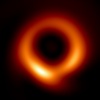Rocks from a rare fireball fell in an area across the Maine-Canada border, and the museum will pay people to find it.
AP
Hide caption
Switch caption
AP

Rocks from a rare fireball fell in an area across the Maine-Canada border, and the museum will pay people to find it.
AP
A rare fireball was seen flying across the northern Maine sky in broad daylight last week. Experts hoping to study the meteorite are now offering a monetary reward to anyone who can retrieve a piece of it.
NASA says this was the first meteorite fall ever detected by radar in Maine. shortly before noon on Saturday, eyewitnesses reported A bright fireball is seen over New Brunswick, Canada, followed by a “loud sonic boom” near Calais, Maine.
This is particularly unusual because most fireballs are spotted during the night, when their light contrasts with the dark sky, as noted by the Maine Mineral and Gem Museum in Wednesday Facebook Post.

“This fireball that we see during the day is incredibly rare; imagine how bright it can be at night,” she added.
Using radar, NASA was able to detect falling meteorites and calculate where they landed, noting that strong winds of up to 100 mph are carrying smaller meteorites across the border into Canada.
The mile-wide “sparse field” stretches from just north of White, Maine, to Canoes, New Brunswick. The Mineral Museum encourages people to go explore it.

“Having positive Doppler radar returns — meteorites detected plummeting through the atmosphere only several miles above Earth’s surface — assures us that there are meteorites waiting to be found,” said Daryl Pitt, chair of the museum’s meteorite division. Monday release.
The museum, which houses the world’s largest lunar and Martian specimens, is offering $25,000 for the first 1 kilogram of meteorite found – but is willing to buy other parts, too.
“Depending on the type of meteorite, samples can easily be worth their weight in gold,” Pitt said.
The museum says people are most likely to find specimens “immediately west of Canoes straddling both sides of the border,” and that the bounty is also available to Canadians.
And there are a few things that officials want people to know before they start looking.

For example, a museum research lab technologist can test samples for identification by appointment only, a process that costs money and takes five to 10 business days to produce results.
The museum advises first-time hunters to do some online research first so they know what to look for — and warns everyone to take appropriate precautions.
“Needless to say, one must obtain permission to search on private property,” she adds.
What are you looking for
Finding meteorites is not an easy task.
house he told CNN That only eight to 10 of the hundreds of meteorites seen falling to Earth each year are recovered. In fact, this same museum offered a $20,000 reward for the meteorite fragments Back in 2016 And I didn’t get any.
But Pitt says he’s more optimistic this time around, especially because more detailed information is available from NASA’s radar data.
So what should meteorite hunters look for? The museum says testing the chemical composition is the most definitive way to find out what they’ve found, but there are clues that can point them in the right direction.
meteorites Tend to be Heavy and magnetic, with shallow depressions (but not holes) on its surface and densely packed interiors. They can be of irregular shape, and usually have a smooth rather than rough exterior.

experts in University of Alberta I recommend these four tests: Check if the specimen is unusually heavy for its size, test its magnetism with a fridge magnet, check for holes and bubbles, and check the outer layer for a thin, eggshell-like crust.
If the rock passes all four, it may be a meteorite. But it may not be from Saturday’s fireball, the museum warns: “Specimens showing advanced plant material are not from this fireball event!”

“Certified music scholar. Freelance analyst. Social mediaholic. Hipster-friendly web nerd. Zombie buff.”
